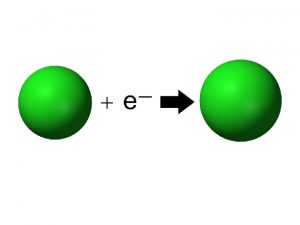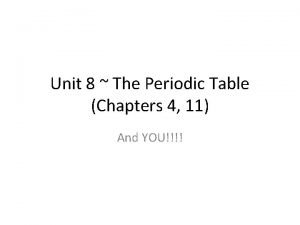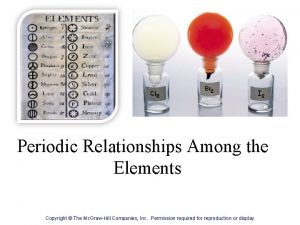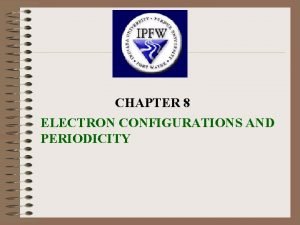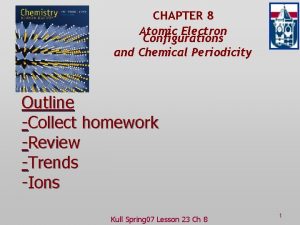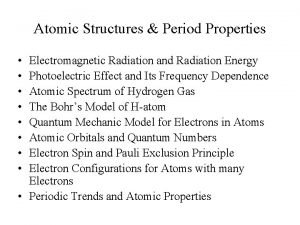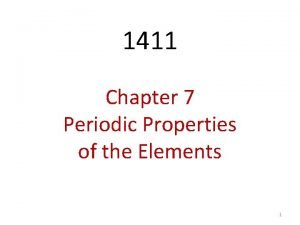Additional Periodic Trends Electron Affinity What does the












- Slides: 12

Additional Periodic Trends

Electron Affinity • What does the word ‘affinity’ mean? • Electron affinity is the energy change that occurs when an atom gains an electron (also measured in k. J). • Where ionization energy is always endothermic, electron affinity is usually exothermic, but not always.

Electron Affinity • Electron affinity is exothermic if there is an empty or partially empty orbital for an electron to occupy. • If there are no empty spaces, a new orbital must be created, making the process endothermic. • This is true for the alkaline earth metals and the noble gases.

Electron Affinity Increases UP and to the RIGHT

Electronegativity • Electronegativity is a measure of an atom’s • • • attraction for another atom’s electrons. It is an arbitrary scale that ranges from 0 to 4. The units of electronegativity are Paulings. Generally, metals are electron givers and have low electronegativities. Nonmetals are electron takers and have high electronegativities. What about the noble gases?

Electronegativity • Increases UP and to the RIGHT 0

Overall Reactivity • This ties all the previous trends together in one package. • However, we must treat metals and nonmetals separately. • The most reactive metals are the largest since they are the best electron givers. • The most reactive nonmetals are the smallest ones, the best electron takers.

Overall Reactivity • Your help sheet will look like this: 0

The Octet Rule • The “goal” of most atoms (except H, Li and Be) is to have an octet or group of 8 electrons in their valence energy level. • They may accomplish this by either giving electrons away or taking them. • Metals generally give electrons, nonmetals take them from other atoms. • Atoms that have gained or lost electrons are called ions.

Review of Ionic Radius • Cations are always smaller than the original atom. • The entire outer PEL is removed during ionization. • Conversely, anions are always larger than the original atom. • Electrons are added to the outer PEL.

Cation Formation Effective nuclear charge on remaining electrons increases. Na atom 1 valence electron 11 p+ Valence elost in ion formation Result: a smaller sodium cation, Na+ Remaining e- are pulled in closer to the nucleus. Ionic size decreases.

Anion Formation Chlorine atom with 7 valence e 17 p+ One e- is added to the outer shell. Effective nuclear charge is reduced and the e- cloud expands. A chloride ion is produced. It is larger than the original atom.
 Periodic trends electron affinity
Periodic trends electron affinity 1s1 electron configuration
1s1 electron configuration Periodic table trends
Periodic table trends Periodic family names
Periodic family names Exothermic electron affinity trend
Exothermic electron affinity trend Whats the trend for atomic radius
Whats the trend for atomic radius Effective nuclear charge trend
Effective nuclear charge trend Electron affinity trend
Electron affinity trend 8 electron configuration
8 electron configuration Greatest electron affinity
Greatest electron affinity Oxygen electron affinity
Oxygen electron affinity Least electron affinity
Least electron affinity Coulomb's law periodic trends
Coulomb's law periodic trends
